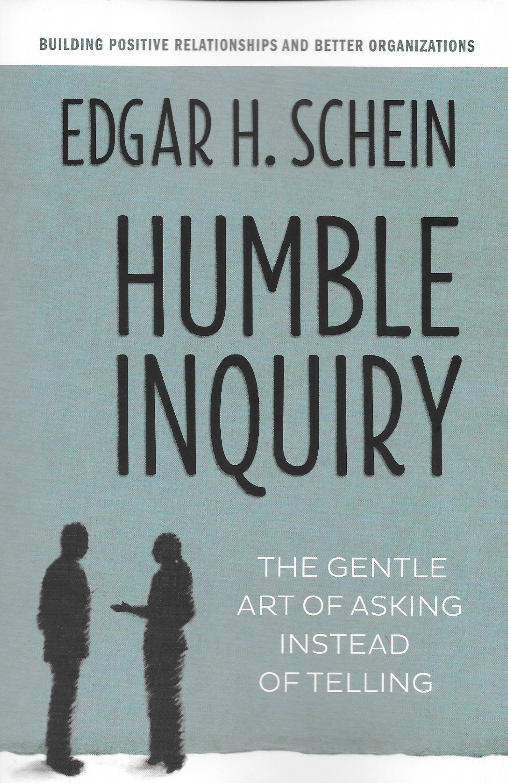The one sentence summary
People can be much more effective by asking than by telling.
WHAT THE BOOK SAYS

- This is all about the gentle art of asking instead of telling.
- Relationships are the key to good communication, which is vital to task accomplishment; and humble inquiry, based on here-and-now humility, is the key to good relationships.
- Too often in companies when we interact with people – especially those who report to us – we simply tell them what we think they need to know. This shuts them down. Instead we need humble inquiry.
- This is defined as “the fine art of drawing someone out, of asking questions to which you do not know the answer, of building a relationship based on curiosity and interest in the other person.”
- We must become better at asking and do less telling in a culture that overvalues telling. In particular in the USA, task accomplishment is valued more than relationship building. The culture of tell prevails, and asking questions is seen as a sign of ignorance or weakness.
- But asking is actually a strength rather than a weakness because it provides a better chance of figuring out what is going on before acting.
- There are three kinds of humility:
1. Basic humility: usually generated by societal norms, such as class or respect for elders.
2. Optional humility: feeling humble in the presence of those who have clearly achieved more than us.
3. Here-and-now humility: how I feel when I am dependent on you. This is crucial to humble inquiry. My status is inferior to yours at this precise moment because you know something or can do something that I need in order to accomplish some task or goal.
- Inquiry is a complex concept – both a science and an art. The essence of it goes beyond just overt questioning. It derives from an attitude of interest and curiosity, and implies a desire to build a relationship that will lead to more open communication. It takes four forms:
- Humble inquiry: accessing your own ignorance in the least biased and threatening way.
- Diagnostic inquiry: not telling, but steering the conversation and influencing the other person’s mental process, through asking about feelings, reactions, causes, motives, and actions they have taken.
- Confrontational inquiry: inserting your own ideas in the form of a question.
- Process-oriented inquiry: asking: “What is happening here?”, “Have we gone too far?”, “Is this too personal?”
- In summary, the key to coordination is shared goals, mutual understanding of each other’s work, and mutual respect.
WHAT YOU HAVE TO WATCH
- This is helpful advice, but don’t expect too much of a rigorous method. There are plenty of examples, but you will need to work out your own style of humble inquiry.
